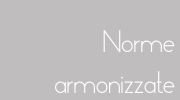ADR 2019 Preview: nuove disposizioni controllo temperatura
| ID 6648 | | Visite: 10909 | ADR 2019 | Permalink: https://www.certifico.com/id/6648 |
ADR 2019 Preview: nuove disposizioni per il controllo della temperatura Cap. 7.1.7
In allegato il nuovo Cap 7.1.7 "Special provisions applicable to the carriage of self-reactive substances of Class 4.1, organic peroxides of Class 5.2 and substances stabilized by temperature control (other than self-reactive substances and organic peroxides)".
Il Cap. 7.1 sulle Condizioni generali per il trasporto, il carico, la movimentazione e la movimentazione che terminava con il Cap. 7.1.6, ora, con l'ADR 2019, viene ampliato e include il nuovo Cap. 7.1.7, che raggruppa le regole generali e le regole speciali per il controllo della temperatura. Ciò porta a modifiche consequenziali nelle disposizioni delle parti 2, 3, 5, 8 e 9.
Estrattto ADR EN
Amend the heading to read “GENERAL PROVISIONS AND SPECIAL PROVISIONS FOR TEMPERATURE CONTROL”.
Add the following new 7.1.7:
“7.1.7 Special provisions applicable to the carriage of self-reactive substances of Class 4.1, organic peroxides of Class 5.2 and substances stabilized by temperature control (other than self-reactive substances and organic peroxides)
7.1.7.1 All self-reactive substances, organic peroxides and polymerizing substances shall be protected from direct sunlight and all sources of heat, and placed in adequately ventilated areas.
7.1.7.2 Where a number of packages are assembled in a container or closed vehicle, the total quantity of substance, the type and number of packages and the stacking arrangement shall not create an explosion hazard.
7.1.7.3 Temperature control provisions
7.1.7.3.1 These provisions apply to certain self-reactive substances when required by 2.2.41.1.17, and certain organic peroxides when required by 2.2.52.1.15 and certain polymerizing substances when required by 2.2.41.1.21 or special provision 386 of Chapter 3.3 which may only be carried under conditions where the temperature is controlled.
7.1.7.3.2 These provisions also apply to the carriage of substances for which:
(a) The proper shipping name as indicated in column 2 of Table A of Chapter 3.2 or according to 3.1.2.6 contains the word “STABILIZED”; and
(b) The SADT or SAPT determined for the substance (with or without chemical stabilization) as offered for carriage is:
(i) 50 °C or less for single packagings and IBCs; or
(ii) 45 °C or less for tanks. When chemical inhibition is not used to stabilize a reactive substance which may generate dangerous amounts of heat and gas, or vapour, under normal carriage conditions, this substance needs to be carried under temperature control. These provisions do not apply to substances which are stabilized by the addition of chemical inhibitors such that the SADT or the SAPT is greater than that prescribed in (b) (i) or (ii), above. 7.1.7.3.3 In addition, if a self-reactive substance or organic peroxide or a substance the proper shipping name of which contains the word “STABILIZED” and which is not normally required to be carried under temperature control is carried under conditions where the temperature may exceed 55 °C, it may require temperature control.
7.1.7.3.4 The “control temperature” is the maximum temperature at which the substance can be safely carried. It is assumed that during carriage the temperature of the immediate surroundings of the package does not exceed 55 °C and attains this value for a relatively short time only during each period of 24 hours. In the event of loss of temperature control, it may be necessary to implement emergency procedures.
The “emergency temperature” is the temperature at which such procedures shall be implemented.
7.1.7.3.5 Derivation of control and emergency temperatures
| Type of receptacle | SADTa /SAPTa | Control temperature | Emergency temperature |
| Single packagings and IBCs | 20 °C or less over 20 °C to 35 °C over 35 °C |
20 °C below SADT/SAPT 15 °C below SADT/SAPT 10 °C below SADT/SAPT |
10 °C below SADT/SAPT 10 °C below SADT/SAPT 5 °C below SADT/SAPT |
| Tanks | ≤ 45 °C | 10 °C below SADT/SAPT | 5 °C below SADT/SAPT |
a - i.e. the SADT/SAPT of the substance as packed for carriage
7.1.7.3.6 The control and emergency temperatures are derived using the table in 7.1.7.3.5 from the SADT or from the SAPT which are defined as the lowest temperatures at which self-accelerating decomposition or self-accelerating polymerization may occur with a substance in the packaging, IBC or tank as used in carriage. An SADT or SAPT shall be determined in order to decide if a substance shall be subjected to temperature control during carriage. Provisions for the determination of the SADT and SAPT are given in Part II, section 28 of the Manual of Tests and Criteria.
7.1.7.3.7 Control and emergency temperatures, where appropriate, are provided for currently assigned self-reactive substances in 2.2.41.4 and for currently assigned organic peroxide formulations in 2.2.52.4.
7.1.7.3.8 The actual carriage temperature may be lower than the control temperature but shall be selected so as to avoid dangerous separation of phases.
7.1.7.4 Carriage under temperature control
7.1.7.4.1 Maintenance of the prescribed temperature is an essential feature of the safe carriage of substances stabilized by temperature control. In general, there shall be:
(a) Thorough inspection of the cargo transport unit prior to loading;
(b) Instructions to the carrier about the operation of the refrigeration system including a list of the suppliers of coolant available en route;
(c) Procedures to be followed in the event of loss of control;
(d) Regular monitoring of operating temperatures; and
(e) Provision of a back-up refrigeration system or spare parts.
7.1.7.4.2 Any control and temperature sensing devices in the refrigeration system shall be readily accessible and all electrical connections weather-proof. The temperature of air space within the cargo transport unit shall be measured by two independent sensors and the output shall be recorded so that temperature changes are readily detectable. The temperature shall be checked every four to six hours and logged. When substances having a control temperature of less than +25 °C are carried, the cargo transport unit shall be equipped with visible and audible alarms, powered independently of the refrigeration system, set to operate at or below the control temperature.
7.1.7.4.3 If during carriage the control temperature is exceeded, an alert procedure shall be initiated involving any necessary repairs to the refrigeration equipment or an increase in the cooling capacity (e.g. by adding liquid or solid refrigerants). The temperature shall also be checked frequently and preparations made for implementation of the emergency procedures. If the emergency temperature is reached, the emergency procedures shall be initiated.
7.1.7.4.4 The suitability of a particular means of temperature control for carriage depends on a number of factors. Factors to be considered include:
(a) The control temperature(s) of the substance(s) to be carried;
(b) The difference between the control temperature and the anticipated ambient temperature conditions;
(c) The effectiveness of the thermal insulation;
(d) The duration of carriage; and
(e) Allowance of a safety margin for delays.
7.1.7.4.5 Suitable methods for preventing the control temperature being exceeded are, in order of increasing control capability:
(a) Thermal insulation provided that the initial temperature of the substance(s) to be carried is sufficiently below the control temperature;
(b) Thermal insulation with coolant system provided that:
(i) An adequate quantity of non-flammable coolant (e.g. liquid nitrogen or solid carbon dioxide), allowing a reasonable margin for delay, is carried or a means of replenishment is assured;
(ii) Liquid oxygen or air is not used as coolant;
(iii) There is a uniform cooling effect even when most of the coolant has been consumed; and
(iv) The need to ventilate the transport unit before entering is clearly indicated by a warning on the door(s) of the transport unit;
(c) Thermal insulation and single mechanical refrigeration provided that for substance(s) to be carried with a flash point lower than the sum of the emergency temperature plus 5 °C explosion-proof electrical fittings, EEx IIB T3 are used within the cooling compartment to prevent ignition of flammable vapours from the substances;
(d) Thermal insulation and combined mechanical refrigeration system with coolant system; provided that:
(i) The two systems are independent of one another;
(ii) The provisions in (b) and (c) are complied with;
(e) Thermal insulation and dual mechanical refrigeration system; provided that:
(i) Apart from the integral power supply unit, the two systems are independent of one another;
(ii) Each system alone is capable of maintaining adequate temperature control; and
(iii) For substance(s) to be carried with a flash point lower than the sum of the emergency temperature plus 5 °C explosion-proof electrical fittings, EEx IIB T3, are used within the cooling compartment to prevent ignition of flammable vapours from the substances.
7.1.7.4.6 The methods described in 7.1.7.4.5 (d) and (e) may be used for all organic peroxides and self-reactive substances and polymerizing substances.
The method described in 7.1.7.4.5 (c) may be used for organic peroxides and selfreactive substances of Types C, D, E and F and, when the maximum ambient temperature to be expected during carriage does not exceed the control temperature by more than 10 °C, for organic peroxides and self-reactive substances of Type B and polymerizing substances.
The method described in 7.1.7.4.5 (b) may be used for organic peroxides and selfreactive substances of Types C, D, E and F and polymerizing substances when the maximum ambient temperature to be expected during carriage does not exceed the control temperature by more than 30 °C.
The method described in 7.1.7.4.5 (a) may be used for organic peroxides and selfreactive substances of Types C, D, E and F and polymerizing substances when the maximum ambient temperature to be expected during carriage is at least 10 °C below the control temperature.
7.1.7.4.7 Where substances are required to be carried in insulated, refrigerated or mechanically-refrigerated vehicles or containers, these vehicles or containers shall satisfy the requirements of Chapter 9.6.
7.1.7.4.8 If substances are contained in protective packagings filled with a coolant, they shall be loaded in closed or sheeted vehicles or closed or sheeted containers. If the vehicles or containers used are closed they shall be adequately ventilated. Sheeted vehicles and containers shall be fitted with sideboards and a tailboard. The sheets of these vehicles and containers shall be of an impermeable and non-combustible material.”.
Certifico Srl - IT | Rev. 00 2018
Collegati
ADR 2019: il Draft delle modifiche
ADR 2019 Esenzione parziale 1.1.3.6: Quantità totale "calcolata" in DdT
ADR 2019: Addendum e corrigendum al Draft delle modifiche
ADR 2019 Preview: nuovi numeri ONU per gli articoli
ADR 2019: al via la procedura di approvazione con la comunicazione UNECE
ADR 2019 Preview: nuova classificazione sostanze corrosive
ADR 2019 Preview: obbligo nomina consulente ADR spedizionieri
ADR 2019 Preview: Batterie al litio per lo smaltimento | Modifica DS 188
| Descrizione | Livello | Dimensione | Downloads | |
|---|---|---|---|---|
| ADR 2019 Preview Nuove disposizioni controllo temperatura Cap. 7.1.7.pdf Certifico S.r.l. Rev. 00 2018 |
129 kB | 34 |





































